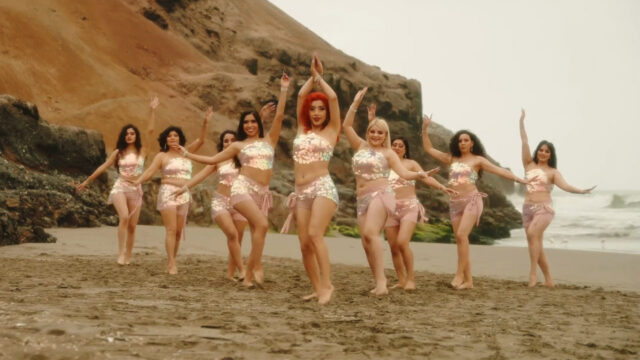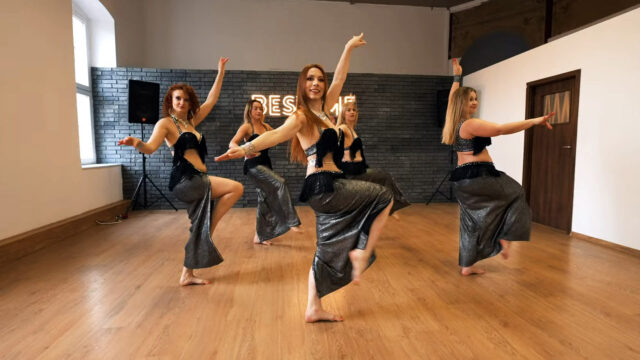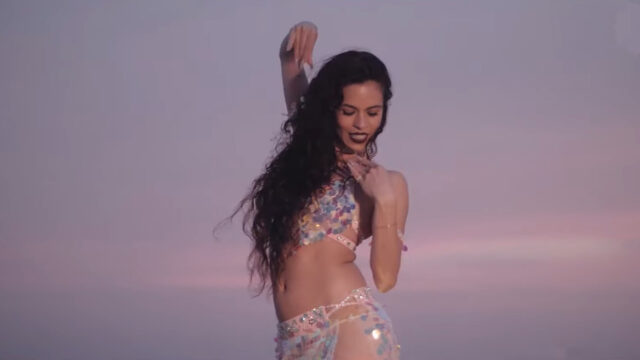Have you ever watched a bellydancer and thought, “Wow, that looks like water in motion”? You’re not alone. The graceful, flowing movements of bellydance share a surprising kinship with the fluid dynamics of water. Let’s dive into this fascinating connection, but first, let’s watch a bellydance video featuring Elena Sazonova as a great example:

The Ripple Effect
Imagine dropping a pebble into a calm pond. The water ripples outward in concentric circles, each wave flowing seamlessly into the next. Now picture a bellydancer’s undulating torso. See the similarity? Those smooth, wave-like motions mimic water’s natural flow. It’s no wonder bellydance is often described as “liquid motion.”
- Yalla Habibi Beginner Belly Dance Choreography by Kathiedra
- Belly Dance Class as a High Intensity Workout: Is It That Good?
- The Mind-Body Connection of Belly Dance
But the connection goes deeper than just appearances. Both water and bellydance share some key characteristics:
- Continuous flow
- Adaptability to surroundings
- Ability to be both gentle and powerful
Going with the Flow
Water doesn’t fight gravity – it embraces it. Similarly, bellydancers work with their bodies, not against them. This philosophy of “going with the flow” is central to both:
- Water finds the path of least resistance, shaping itself to its environment.
- Bellydancers use natural body mechanics, allowing movements to originate from the core and ripple outward.
Think about how water moves around obstacles in a stream. Now imagine a bellydancer smoothly transitioning between moves. Both demonstrate an effortless adaptability that’s mesmerizing to watch.
The Power of Softness
Don’t let the fluid grace fool you – there’s strength in those movements! Water can be a gentle trickle or a roaring tsunami. Bellydance, too, ranges from subtle shimmies to powerful hip drops.
Here’s where it gets really interesting: Both water and bellydance harness the power of circular motion. Whirlpools and hip circles might seem worlds apart, but they’re driven by the same principles of centrifugal and centripetal forces. Mind-blowing, right?
A Dance of Opposites
Water is a study in contrasts, and so is bellydance. Soft yet strong, structured yet flowing, these seeming contradictions create a captivating harmony. Let’s break it down:
| Water | Bellydance |
|---|---|
| Can be still or turbulent | Combines slow, controlled movements with quick, vibrant ones |
| Shapes itself to containers | Adapts to different music styles and rhythms |
| Reflects its surroundings | Expresses the dancer’s emotions and personality |
Why It Matters
Understanding this connection isn’t just a cool party fact. It can actually improve your dancing (or your appreciation of it)! By visualizing water’s movement, dancers can tap into a more natural, effortless flow. For spectators, recognizing these fluid dynamics adds a whole new layer of appreciation to the art form.
So, next time you’re by a stream or watching waves crash on the shore, take a moment to observe. You might just spot the makings of a beautiful bellydance routine in nature’s choreography!
What do you think? Has this unexpected connection between bellydance and water sparked your curiosity? Whether you’re a dancer, a nature lover, or just someone who appreciates the marvels of movement, there’s always something new to discover when we look at the world through fresh eyes.
If you enjoyed this article, feel free to share it with your friends. Also, as online education getting more and more common these days, we’ve decided to launch a new online schools section. Consider checking it out if you’d like to learn to dance from the comfort of your home. Such online classes offer a convenient way to learn from world class teachers at an affordable price.








